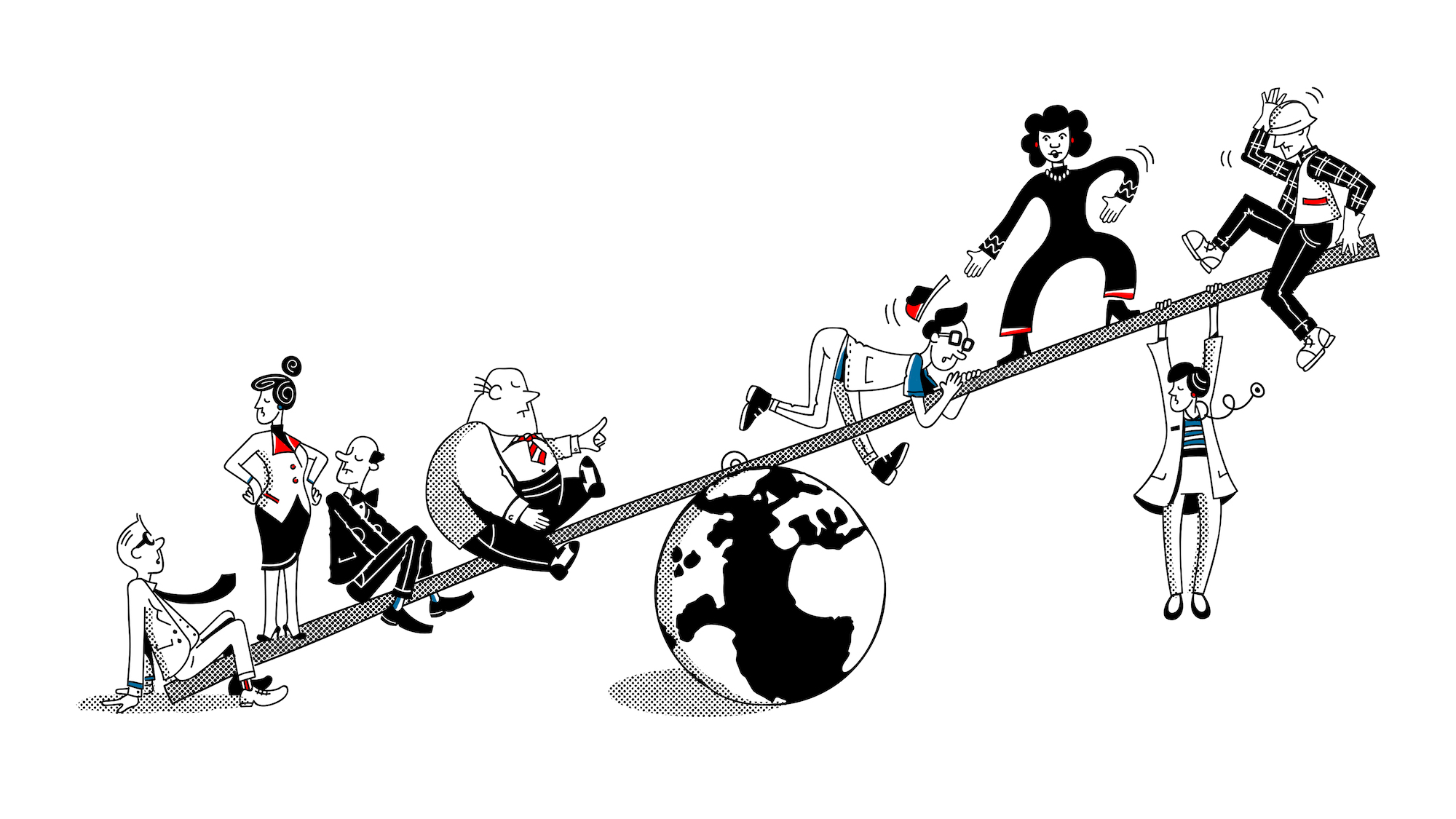

RECOMMENDED READING
Markets do not naturally tend toward “equilibrium.” They are wrecking balls if not properly harnessed. High levels of debt, which can be a source of strength (by enabling higher levels of investment than could be financed otherwise), can also be a source of vulnerability if the government fails to coordinate investment, curb excess capacity, and maintain the economy’s external liabilities within its capacity to repay.
East Asian countries like Japan, South Korea, and China understand that. We do not. Or at least not until a once-in-a-generation pandemic upended all of our assumptions about national development.
Illustrating this new understanding, Brian Deese, director of the National Economic Council, spoke earlier this week at the Atlantic Council on a 21st century national industrial strategy that includes stepped-up supply chain security, public investments in infrastructure and technology, and a new way of advancing public-private partnerships to create jobs and growth.
Sound familiar? It should: it is the template that was deployed to develop COVID-19 vaccines in Operation Warp Speed (OWS). As David Adler has highlighted, this was “a triumph of public health policy. But it was also a triumph and validation of industrial policy.” In concrete policy terms, this means a practical nuts-and-bolts strategy like nurturing supply links between domestic firms and subsidiaries of multinational corporations along with a significant coordination from the state itself. The government can’t simply be a neutral umpire. It must do as the East Asian nations do: namely, creating “rents” (i.e., above normal market returns) by “distorting” markets through industrial policies to induce higher investment in activities that the government sees as critical to the economy’s transformation, and to sustain a political coalition in support of these policies.
Relying on “the market” or championing outsourcing in rising domestic costs might provide short term benefits. But ultimately, it undermines national prosperity by degrading valuable domestic social capital and skills.
At its best, state-driven policy is characterized by an ability to mobilize resources. But absent private sector discipline, it generally doesn’t use them efficiently. In the case of OWS, this dichotomy was clearest in the vaccine rollout, where, as Adler illustrates, there was a marked divergence between vaccine distribution (largely handled by the private sector) and administration (largely handled by state governments, with minimal guidance from the federal government).
The East Asian model has succeeded precisely because it uses the market as a kind of feedback mechanism, which has facilitated more effective reallocation by mobilizing resources and stimulating investment. While they do at times shift resources away from the free market and toward more strategic uses to support the economy’s future growth, the East Asian states are far better at mobilizing resources and stimulating investment than, say, the Soviet Union, which largely eschewed any “taint” of private sector enterprise. The East Asian model is also largely collaborative, in contrast to the European Union, which sought to scapegoat pharmaceutical companies for the state’s own failures in vaccine procurement and distribution.
On the other hand, as the pandemic has illustrated, a totally free market model is at times incompatible with broader public health initiatives. As Adler points out, despite the fact that the U.S. had already made huge advances in vaccine technology, the vaccine business was “a sleepy one” given its intermittent profitability (because vaccines don’t require daily use), as well as the considerable regulatory hurdles. Add to that the substantial incentives of an overly financialized economy, and you’ll see dollars shift from R&D to stock buybacks and senior management compensation.
This underlying tension is at play in the question of booster vaccines. Widespread uptake of the vaccine might require annual booster shots in order to reduce the risk of the virus continuing to spread and mutate. But it is unclear who will pay for future shots or how much they’ll cost. Higher prices are clearly in the interest of Big Pharma, but high prices will keep consumers from taking the boosters, which in turn is incompatible with pandemic mitigation.
State-directed economic development has long been criticized on the grounds that the government should not be in the business of “picking winners and losers.” The unprecedented success of Operation Warp Speed’s key role in catalyzing successful and rapid development of several vaccines does call that truism into question. But it is important to note that the state was guided in its selection of “winners” via pre-existing platform technologies, whose development had been hampered by a lack of demand and the corresponding financial risk of funding and scaling up manufacturing efforts while the vaccine candidates were still in clinical trials (which the government underwrote). In other words, the government wasn’t arbitrarily picking winners and losers or simply fostering “national champions” as such.
The reality is that private pharmaceutical companies were steered in line with a coherent national strategy by an array of purchases and procurements for the vaccines, effectively underwriting the R&D (even if it was done indirectly via guaranteed purchases of doses, as in the case of Pfizer, although its German joint-venture partner, BioNTech, did receive significant direct state funding).
The “winners and losers” ideology is predicated on the idea that using industrial policy to pursue national developmentalism is inefficient and wasteful. To the contrary, efficiency is the enemy of innovation: investing in uncertainty means tolerating waste, whether it is the state or speculators who lose when projects fail. As the venture capitalist and economist, William Janeway argues, “In a high-growth fully employed economy, more innovative projects will be financed and people stranded in legacy industries will be more rapidly employed in the new ones … and very much vice versa.”
On balance, Operation Warp Speed was a tremendous success. But unless we absorb the broader lessons, we will let yet another crisis go to waste. The Biden Administration has talked a good game about “building back better”: leveraging government investment to support hyper-competitive knowledge industries that bring in revenue from abroad and preserve U.S. technological dominance. But so far, the sums, relative to the scale of the challenge, are meager. Congress has already gutted most of the R&D funding in the U.S. Innovation and Competition Act, leaving new net R&D spending at around .074% of GDP. Even in areas like health care, there has been little discussion of how we handle drug procurement in the U.S., which is unique among developed economies for the exorbitant prices we pay for pharmaceuticals.
So, the problem remains: Operation Warp Speed has provided a viable template for harnessing the relative strengths of government management and dynamic private sector entrepreneurialism. But the political will to use it remains conspicuously lacking.
Recommended Reading
The Balancing Act
Policymakers can act on several fronts: market access and investment rules to govern the flow of goods and capital; sovereign actions taken in relation to global institutions; and immigration policy that affects labor market composition.
Pass the CHIPS, Please
Restrictions on investment in China are a good idea, to be sure. The taller and stronger the guardrails, the better. But holding incentives for domestic investment hostage to tougher restrictions on foreign investment may not be wise or necessary, for two reasons.
US Industry Is Getting Its Way on China
Biden administration officials were keen to stress the limited scope of new rules announced in last week’s executive order, writes Oren Cass in the Financial Times.












